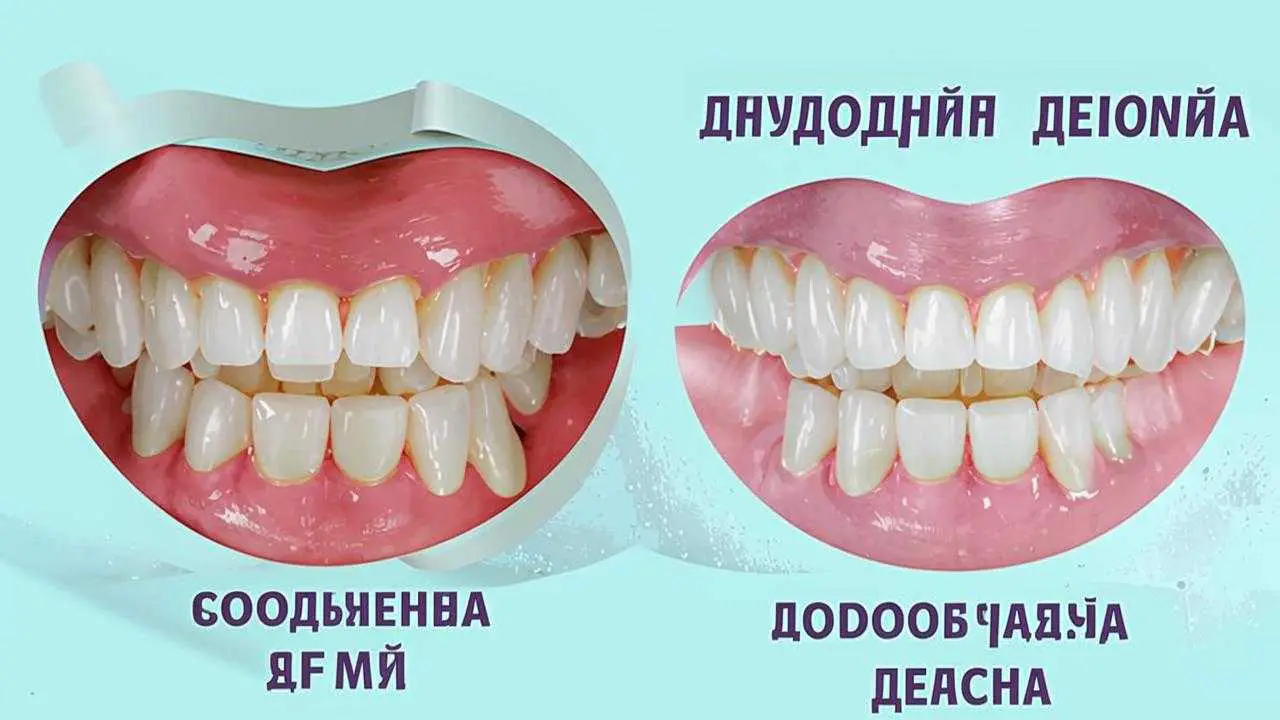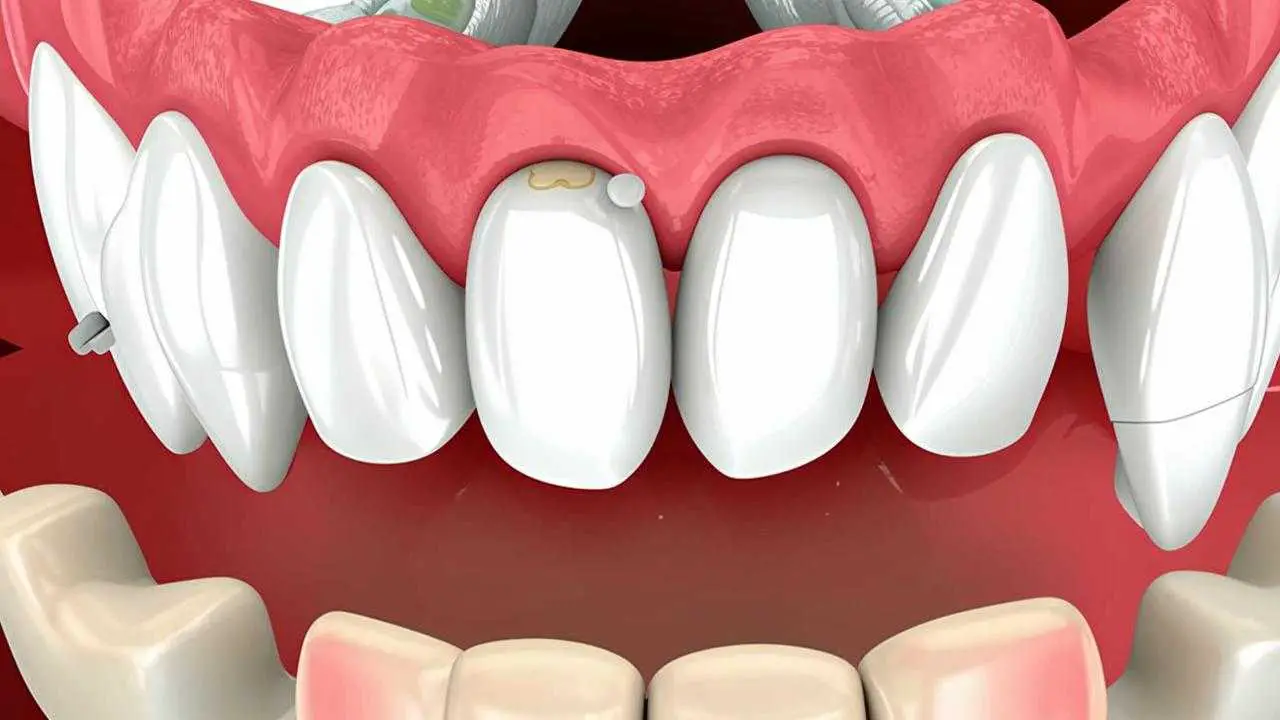The dental term for inflammation of the gums that does not affect the ligaments and does not destroy the bone is gingivitis. Treatment of the disease is not difficult, but if it is neglected, the inflammation will move to the ligamentous apparatus and begin to destroy the bone. This is already periodontitis – the main complication of gingivitis. Therefore, it is important to know the signs and symptoms of the disease in order to take measures in time and prevent complications.
Causes of the disease
The inflammatory process in the gums provokes bacteria. After each meal, the enamel is covered with a microfilm – pellicle. Unlike smooth enamel, pellicle is porous. Bacteria begin to settle on the film. Some of them are washed off with saliva and brushed off with a toothbrush. But it is impossible to completely remove plaque with a toothbrush. Calcium and a number of other substances from saliva penetrate the plaque and mineralize it. More and more bacteria settle on the loose surface, because now it is easy for them to gain a foothold. They penetrate under the gum, actively releasing decay products. Gradually, plaque builds up, hardens more and more, and turns into tartar. The stone protects the bacteria from being washed out by saliva or brushes, their number increases – inflammation begins.
Factors contributing to the development of gingivitis
The risk of inflammation of the mucous membranes increases:
- Smoking.
- Hormonal changes: puberty, pregnancy, menopause.
- Diabetes of the second type.
- Decrease in immunity against the background of autoimmune diseases, chronic infections.
- Insufficient production of saliva.
- General diseases.
- Prosthetics, which does not provide a tight fit of the prosthesis to the gum.
- Bite anomalies that make it difficult to clean the teeth.
Gingivitis and systemic diseases
The inflammatory process in the oral cavity often serves as an indicator of general diseases. If the patient has such diseases as hyperthyroidism, increased adrenal function, blood and gastrointestinal diseases, then treatment must necessarily be complex. It is necessary to stabilize pathological processes of a general nature, so that the treatment of gingivitis is successful.
Types of gingivitis
Inflammation of mucous membranes is classified according to individual signs.
- According to the form of course
- Catarrhal (superficial)
- Ulcerative
- Hypertrophic
- On the severity of course
- Mild
- Medium
- Severe
- By the nature of course
- Acute
- Chronic
- Acute
- By volume of spread
- Generalized
- Localized
Symptoms of the disease depend mainly on the form of gingivitis.
How the disease manifests itself
Signs of acute and chronic catarrhal inflammation are similar, only for chronic gingivitis is characterized by a wave-like manifestation. The disease then flares up, then fades. Catarrhal type of inflammation – the most common. In this form, patients complain of bleeding gums when eating and brushing teeth, unpleasant sensations in the gum. Often, the gingival margin is swollen, plaque is visible at the neck of the teeth. The difference between acute gingivitis and chronic gingivitis is the color of the gum. With acute gingivitis, the gum turns red, and with chronic gingivitis it acquires a bluish color.
As a result of the actions of pathogens there is thinning of the epithelium, increases the permeability of blood vessels and their fragility. Therefore, with mechanical impact capillaries burst and gums bleed.
If the peeling of the epithelium is too pronounced, then there is a special kind of disease – desquamative gingivitis. Thin epithelium can not resist the attack of bacteria, gradually develops an inflammatory process, which captures a large area. Areas with detached epithelium bright red, as if polished. Complaints are mainly of burning in the affected areas. The course of the disease is chronic. In neglected cases, the gingiva is covered with whitish plaque, then blisters form on it.
Ulcerative gingivitis is characterized by the presence of plaque on the gums, signs of ulceration, dying gingival papillae (small triangles between the teeth). Patients have poor health, fever, putrid breath odor. The chronic course of the disease is more dangerous, because the symptomatology is less pronounced. The disease can simmer for years, and then suddenly manifest itself with necrosis (dying off) of tissues. Ulcerative forms of the disease are less common than catarrhal forms.
Hypertrophic gingivitis is divided into edematous and fibrotic. In the first case, the volume of the gingiva increases due to edema, and in the second – due to tissue overgrowth. Swelling gingivitis accompanies hormonal changes during adolescence or pregnancy. Fibrotic is more often caused by the intake of certain drugs, such as diphenin. But hormonal changes can also serve as its cause.
All types of inflammation are manifested locally (on a small area) or generalized (on the entire surface)
Diagnosis
Treatment measures begin with diagnosis, because the treatment of gingivitis is symptomatic, depends on its form and severity.
- In the process of conversation, the dentist conducts a survey in order to find out the patient’s complaints. This can be pain in the gums, burning, bleeding with mechanical impact. The doctor finds out if the patient has bad habits, general diseases, what medications he takes,
- Next, the doctor conducts an external examination. He pays special attention to the condition of the gums: swelling, redness, overgrowth of tissues, the presence of bubbles or ulcers, breath odor. Determines whether there are necrotic changes, plaque and calculus.
- Based on the information obtained, a preliminary diagnosis is made.
- To confirm the diagnosis and differentiate from other diseases may require additional examination: panoramic radiograph, sight picture, hygiene indices, determination of the PH factor of saliva, laboratory tests.
Treatment of gingivitis in adults
The dentist develops a treatment plan after diagnosis. The measures directly depend on the form and type of inflammation.
In most cases, adult patients apply for catarrhal gingivitis. The prognosis of its treatment is the most favorable.
Catarrhal form
Treatment is aimed at accomplishing 3 main tasks:
- Removal of bacterial plaque and tartar to eliminate the cause of inflammation. The procedure is carried out in dentistry with ultrasound, less often with a laser. A special attachment (scaler) breaks up dental deposits, thanks to the high speed of vibrations. To protect the nozzle from overheating, water is applied to it. As the ultrasound passes through the water, it creates many small bubbles (cavitation phenomenon). The bubbles burst and also participate in the destruction of deposits. Cavitation helps to remove hard plaque and sanitizes the oral cavity. It is impossible to normalize the condition of the gums without removing plaque.
- Conducting anti-inflammatory therapy. (use of gels, rinses). After the procedure of brushing teeth, the dentist treats the mucosa with an antiseptic and applies an anti-inflammatory agent. Further treatment takes place at home. Usually it is rinses and applications. Treatment is carried out in the morning and evening. The course of treatment is 7-10 days.
- Teaching proper hygiene to avoid relapses. With inadequate hygiene, plaque quickly forms again. It is important to reach the farthest surfaces, brush for at least 2 minutes, floss, and better yet, irrigator. In the stage of exacerbation, it is better to use a soft brush, and toothpaste – therapeutic.
Ulcerative form
The trigger for ulcerative gingivitis can be an exacerbation of common diseases, but the basis is always insufficient hygiene. Therefore, the removal of dental plaque is also a priority in this case. After which the dentist removes the dead tissue. Then the doctor prescribes antimicrobial therapy and rinses. The course of treatment is not less than 7 days. After that, means that restore the epithelium are prescribed.
Self-medication in ulcerative form is dangerous, without the intervention of a doctor, gingivitis can go into gingival necrosis. This is fraught with denudation of the roots, intoxication of the body.
Hypertrophic form
With the edematous variant, treatment begins with professional cleaning of the teeth and antiseptic treatment. Then connect anti-inflammatory therapy. If the condition of the gums does not improve, then injections of sclerosing solution are used. It is injected into each gingival papilla. Also, physical therapy is shown, which leads to thickening of the gum.
If the patient has a fibrotic form, the first thing is to determine and eliminate traumatic factors: rubbing denture, protruding edge of the filling. Then the teeth are freed from plaque. After hygiene, surgical intervention is performed: fibrous tissue is excised. Then a series of applications with anti-inflammatory drugs are prescribed.
Home therapy
Gingivitis of the gums – a disease in which medical intervention is necessary. Aggressive advertising makes you think that you can get rid of inflammation on your own. A person buys pharmacy gels and rinses and, at first glance, the disease recedes. In fact, the symptoms subside, but the cause, plaque, remains. Moreover, plaque accumulates, turns into stone, penetrates deeper under the gum, opening the way for microbes. As a result, severe forms of gingivitis or periodontitis develop. Ultimately, self-treatment can lead to tooth loss.
Home treatment is effective only after removing plaque and means that the doctor recommended. The dentist selects rinses and applications taking into account the individual diagnosis.
Prevention
Prevent oral gingivitis or its recurrences will help simple preventive measures. Recommendations of dentists include:
- Regular brushing of the teeth.
- Using a properly selected brush.
- Replacing the brush with a new one every 2-3 months.
- Using a new brush after each dental procedure (fillings, hygienic cleanings, extractions).
- Use of an electric brush
- Expanding the diet to include hard fruits and vegetables. They are good at removing dental plaque.
- Mandatory visit to the dentist every 6 months for timely detection of inflammation.
- Smoking cessation
Complications
Gingivitis of the tooth is important to treat in time. In neglected cases, the inflammation passes to the surrounding tissues of the tooth. This leads to the development of:
- Periodontitis Inflammation of periodontal tissues takes the second place (after caries) in the list of causes leading to tooth loss. The initial stage of periodontitis is local gingivitis.
- Periodontitis Inflammation of the tooth root. In most cases can lead to extraction.
- Hematogenous diseases Chronic focus of inflammation can affect the heart muscle and cause its inflammation – endocarditis.
Timely appeal to the dentist will help to avoid complications.

